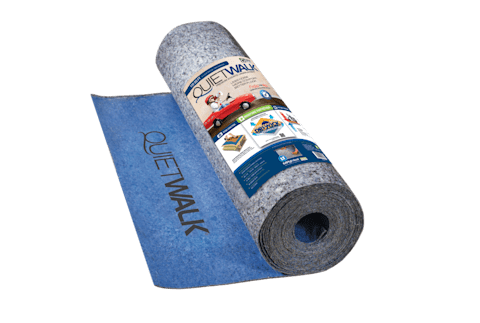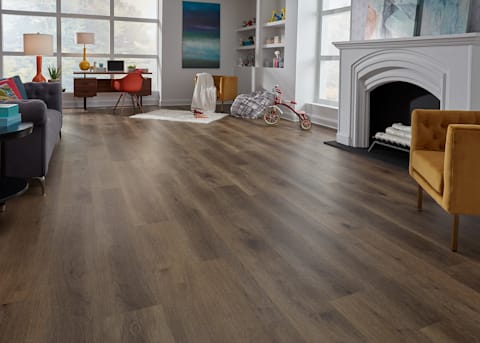- Home
- Education
- Flooring Basics
- Flooring Terms and Lingo: Guide to Vinyl Flooring Acronyms
Flooring Terms and Lingo: Guide to Vinyl Flooring Acronyms
Vinyl flooring shorhand such as LVP, RVP, and SPC describe the components and properties of vinyl products.
LVP, RVP, SPC? Your ABCs of Vinyl Flooring Acronyms
Vinyl is a popular flooring choice for many reasons: It’s waterproof, budget-friendly, easy to install, and looks great. But if you’re just beginning your new vinyl flooring journey, you may already be confused over the shorthand, abbreviations, and other terms you’re coming across in your search. Below is a guide to help demystify the world of vinyl flooring.
Sheets or Planks?
Vinyl sheets may be what first comes to mind when you hear “vinyl flooring.” Sheet vinyl has been around for quite a while and is a low-cost option for flooring that offers waterproof performance. But if you want the most realistic wood and stone looks in vinyl, then vinyl plank—also affordable and waterproof—is the answer.
Each plank consists of multiple layers: a protective coating, a décor layer, and a core. Some also include an attached pad. But there are differences in vinyl plank options, so it’s important to familiarize yourself with the lingo to help in your search.
Differentiate Between Types of Vinyl—From EVP to RVP
LVP
LVP stands for luxury vinyl plank and is often a catch-all term for the vinyl plank flooring described above. But here at LL Flooring, we use the term LVP for our most affordable vinyl plank products. Generally thinner and more pliable, LVP is often designed with a click lock mechanism. They can be glued down, and some of our most economical DIY floors are peel-and-stick vinyl planks.

RVP
RVP, or rigid vinyl plank, offers the same wood and stone looks as LVP but contains a stone-polymer composite (SPC) core for added stability. It’s generally a thicker product. Click-together is the most popular installation method, although these floors can be glued down. You’ll also encounter many RVP products that come with an attached pad for increased comfort underfoot and sound insulation.
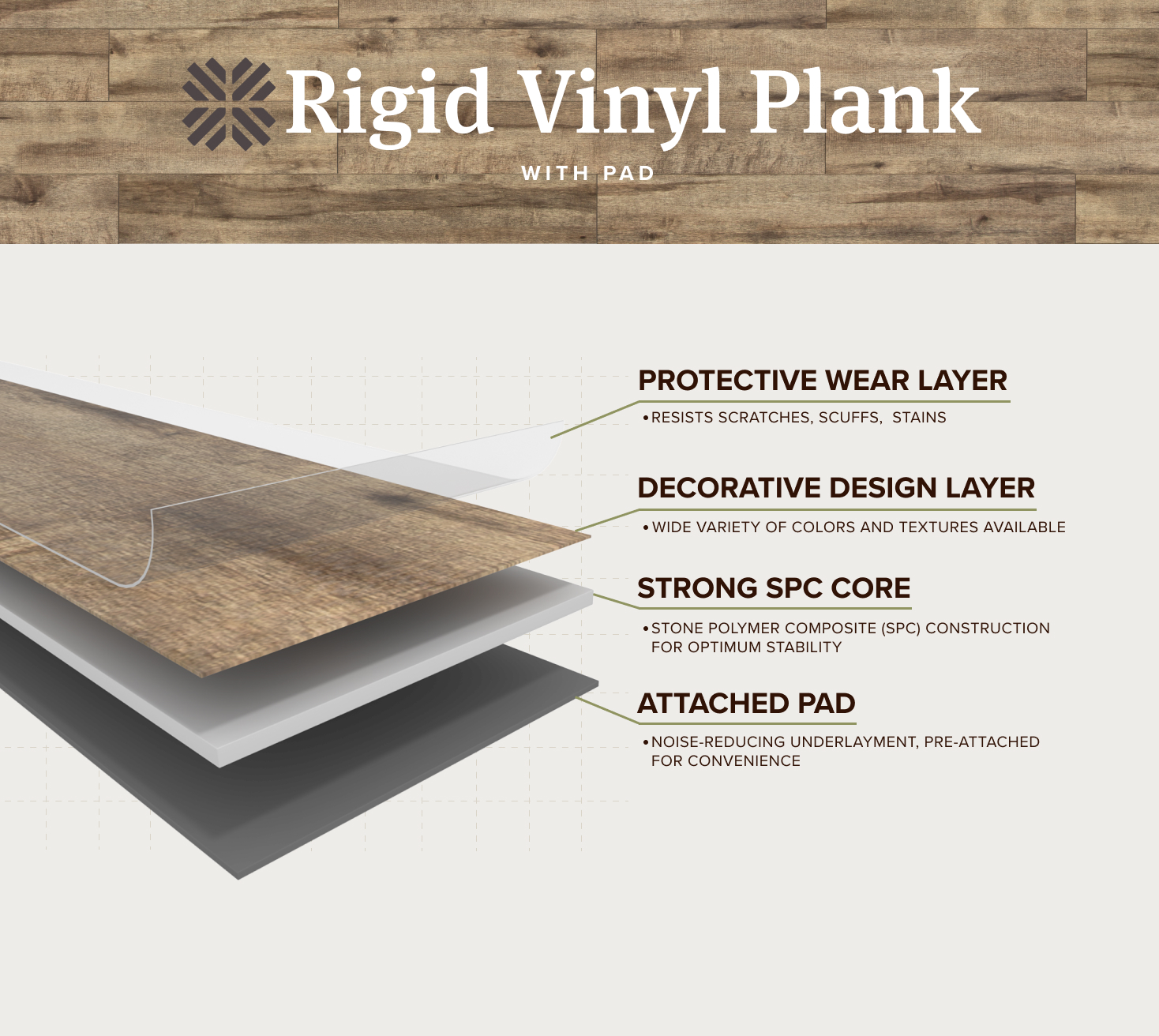
EVP
An older term for RVP that you still may come across is EVP or engineered vinyl plank.
LVT
You might sometimes see the acronym LVT, which stands for luxury vinyl tile. It’s the same product as vinyl plank, only in a square tile shape to resemble traditional stone tile flooring.
Direct Print Vinyl
Although not commonly shortened into an acronym, direct print vinyl is an innovative flooring product you should know about. The color and texture are printed directly onto the core for direct print vinyl, creating the most realistic looks yet. A UV-cured coating provides wear and stain resistance. Our direct print vinyl offering is growing and includes those in the Harmony Collection of waterproof vinyl plank within our CoreLuxe RVP brand.
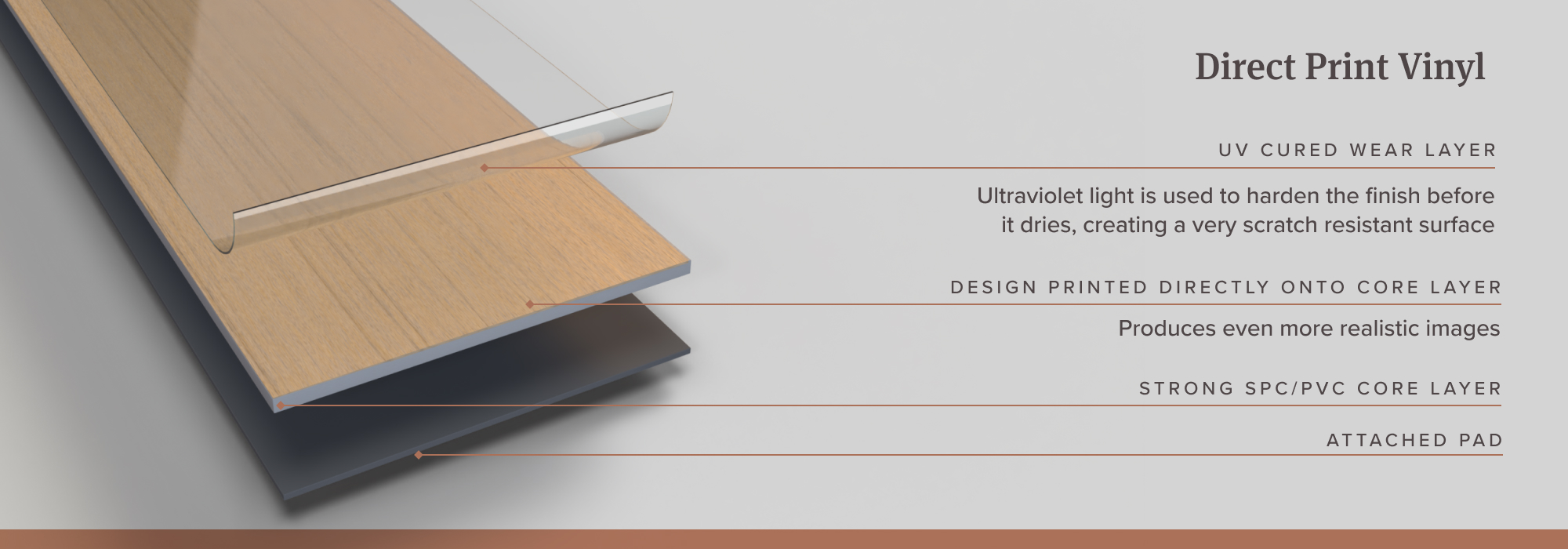
SPC and WPC
SPC and WPC are two abbreviations that are particular to RVP products and describe the makeup of their cores.
WPC
WPC, or wood plastic composite, is a common component of RVP flooring in the market today. It’s made up of wood pulp and plastic (polymer) that’s expanded with a foaming agent. This creates a rigid core, but the downside is that the wood pulp and air from the foaming agent make it more susceptible to denting.
SPC
SPC—stone-polymer composite— uses powdered stone instead of wood pulp and does not contain the foaming agent. The stone makes for a denser product, making the vinyl plank more dent-resistant. For instance, RVP with an SPC core can accommodate heavy furniture and workout equipment. This is why SPC is LL Flooring's structure of choice.
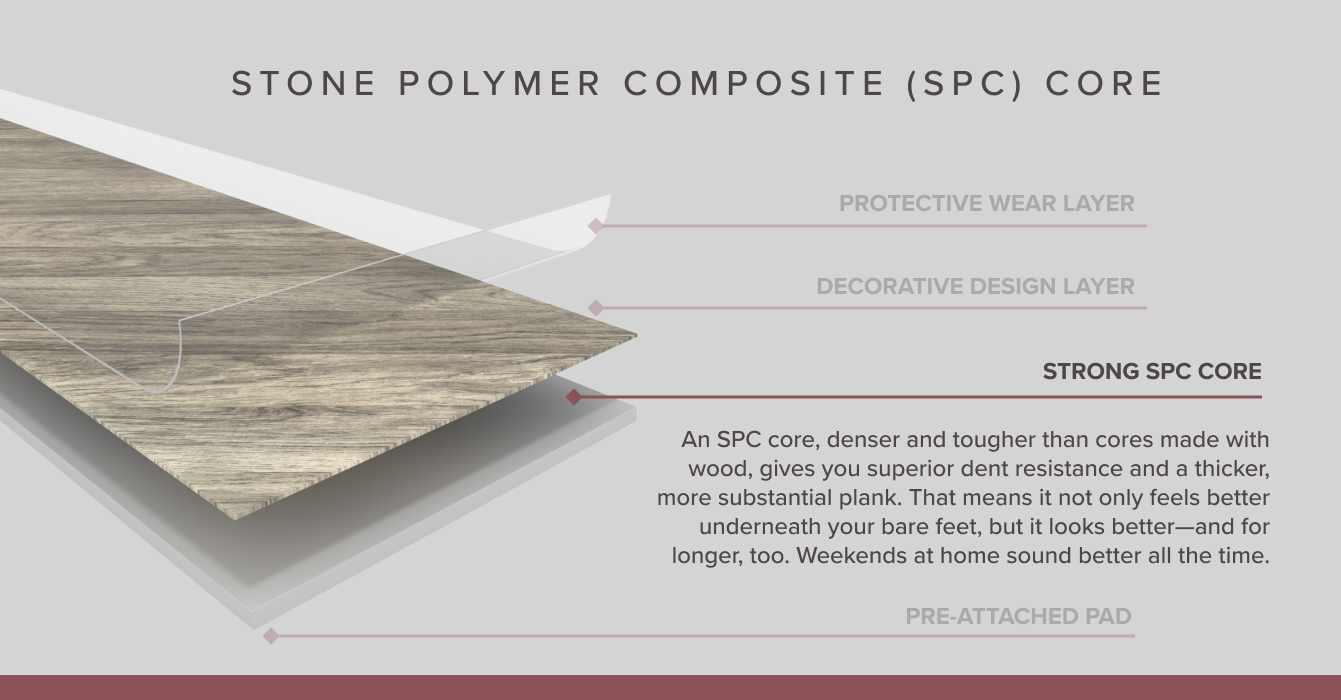
Mil and Mm
These abbreviations come into play when we’re talking about the thickness of the wear layer and the actual vinyl plank flooring. For rough-and-tumble households, wear layer thickness is crucial. This thickness is expressed in mils—which, by the way, is not short for millimeters. A mil is a thousandth of an inch, which amounts to .0254 millimeters. LL Flooring offers a thicker wear layer than most other brands, with a wide selection of 20 mils and higher, ideal for residential and commercial applications. Standard residential wear layer thickness starts at 6 mils and up.
Millimeters (mm) usually apply to the plank's thickness, although you may see mm used in the thickness of the wear layer. Thicker planks can add more stability, sturdiness, comfort, and insulation. At LL Flooring, we have a range of thicknesses to choose from, with many of our rigid vinyl plank products between 5mm and 8mm.
Being familiar with these acronyms, abbreviations, and terms should make it easier to determine what kind of vinyl flooring is best for you and help to narrow down your options. If you're ready to learn more, check out our Flooring 101s for more information on how to install, care for, and maintain your flooring.
Please SUBSCRIBE to the LL Flooring YouTube Channel to learn more, leave comments that helped you, and join the community!



